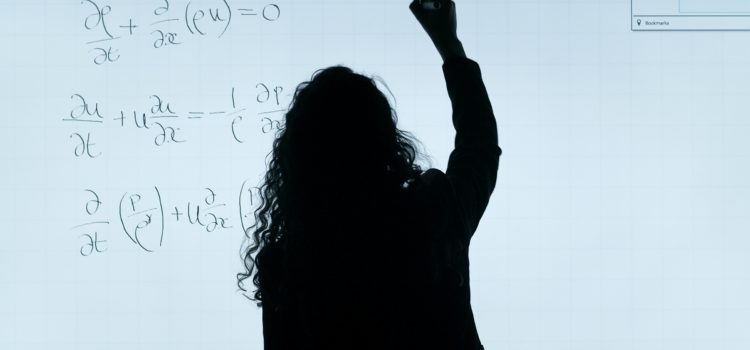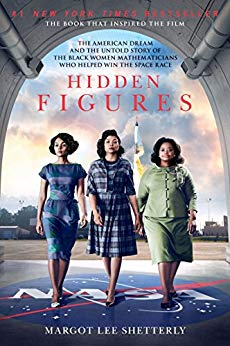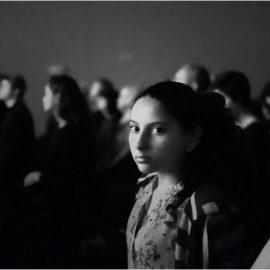

This article is an excerpt from the Shortform summary of "Hidden Figures" by Margot Lee Shetterly. Shortform has the world's best summaries of books you should be reading.
Like this article? Sign up for a free trial here .
Who are Katherine Johnson, Dorothy Vaughan, and Mary Jackson? What did they do, and why did their contributions matter?
The three women, famously known for their roles at NASA, made unparalleled scientific contributions, and also broke through barriers that had long held women of color back from achieving their potential. Katherine Johnson, Dorothy Vaughan, and Mary Jackson each played a role in the space race and NASA’s success. Their journey is documented in the book Hidden Figures.
How Katherine Johnson, Dorothy Vaughan, and Mary Jackson Fought for Opportunity
After the Allied victory in the war, Hampton Roads, where Langley Aeronautical Memorial Laboratory was located and where Katherine Johnson, Dorothy Vaughan, and Mary Jackson worked, became a focal point of the US defense industry during the Cold War with the Soviet Union. This meant that most of the West Computers who had initially come to Langley on temporary assignment ended up receiving permanent offers of employment, as Dorothy did in 1946.
The Cold War also marked a turning point in the struggle for black civil rights, contributing to the eventual breakdown of Jim Crow. As the United States sought international allies in its fight against worldwide Soviet Communism, American policymakers began to realize that segregation at home had become a significant liability, one that made America’s self-proclaimed leadership of “the free world” look hypocritical and handed a significant propaganda coup to the Soviet Union. The federal government began putting more resources toward desegregation and slowly started to side with the civil rights protesters over the die-hard segregationists. This began to open up more hard-won opportunities for women like Katherine Johnson, Dorothy Vaughan, and Mary Jackson.
Sexism
As women began advancing through the ranks at Langley in the postwar years, they saw that their sex was still a barrier to advancement in a field that was built and run by men. There was a whole universe of networking, consisting of lunches, cocktail hours, and men-only smoking sessions from which the women were excluded. Moreover, the decentralized nature of their work also disadvantaged the female computers. Because they were only given small portions of larger assignments to work on, it was difficult for the women to develop a holistic understanding of the kind of work the male engineers were doing. This made it difficult for people like Katherine Johnson, Dorothy Vaughan, and Mary Jackson to rise in the ranks.
The way to get noticed and start getting real credit for one’s work as a computer was to get out of the general computing pool and become assigned to a specific group working on a particular project. This would allow for the development of specialized knowledge, which would make the computer far more valuable to the team than someone with just general knowledge.
A New Generation
The postwar years would also see a new wave of black women coming to Langley, following in the footsteps of pioneers like Dorothy Vaughan who had done so much to open the doors of opportunity to the next generation. But all the women, Katherine Johnson, Dorothy Vaughan, and Mary Jackson each continued to face challenges.
In 1951, a new 26-year-old native of Hampton Roads named Mary Jackson made her way to West Computing. From an early age, she had committed herself to helping young African-American women make the most of themselves—with a special focus on helping them prepare for college careers. But she, too, felt the sting of segregation—on one occasion at Langley, she was mocked by a group of white female employees for asking where the “colored” bathroom was (as white women, they found Mary’s question absurd—why would they know where her bathroom was?). But she struck up a friendship with Kazimierz “Kaz” Czarnecki, a white engineer who was an assistant section head working on Langley’s Supersonic Pressure Tunnel, who eventually assigned her to his group. Mary distinguished herself, earning a reputation as a trusted and capable mathematician. She was marked as someone who deserved to move ahead.
Another new arrival was Katherine Goble (later known to history as Katherine Johnson), a brilliant young mathematician from West Virginia. In 1952, she and her husband moved to Hampton Roads, drawn by the emerging job opportunities for black professionals and the opportunity for Katherine to work on exciting projects like the ones at Langley. Like those who had come to Hampton Roads during World War Two, Katherine found a ready-made community waiting to accept her and her family, helping her fill the void of the world she’d left behind in her native and beloved West Virginia.
Social and Technological Change
By the mid-1950s, the National Advisory Committee for Aeronautics (NACA), the agency that housed Langley, was beginning to introduce mechanical computers into its laboratory spaces. Companies like Bell Telephone Laboratories and IBM were supplying the government with the first generation of mechanical data-processing machines. The female mathematicians’ jobs weren’t immediately placed in jeopardy, but the most astute among them, like Katherine, could certainly see the writing on the wall—that mastering these powerful machines would be essential to future success at Langley.
This was also happening at a critical time for race relations in America. The year 1954 saw the Supreme Court hand down the landmark Brown v. Board of Education decision, which declared segregated public schools unconstitutional. The injustice of segregation had always been obvious to all of the West Computers. But now, at last, major cracks were beginning to appear in the segregationist system of the South, which in part was made possible by women like Katherine Johnson, Dorothy Vaughan and Mary Jackson.
Space Race
On October 5, 1957, the Soviet Union successfully launched the Sputnik satellite into orbit, inaugurating the space race and sparking a major panic among both American policymakers and the general public. All across the US, people with shortwave radios tuned in to hear the tiny satellite’s telltale “beep beep” and organized observation parties to watch Sputnik as it traveled through space. Sputnik also brought the absurdity of segregation to light. If the Soviet satellite launch represented a true national crisis, then why were black Americans being denied the opportunity to fully serve their country? The US was leaving untapped the intellectual resources of a large part of its population, in service of a ridiculous and morally indefensible commitment to racial apartheid.
All of this created great pressure on NACA to design and test satellites that would be capable of making it to space. The agency was selected as the home for all of America’s space research and operations and given a new name: the National Aeronautics and Space Administration (NASA). Katherine Johnson, Dorothy Vaughan, and Mary Jackson all had key roles at NASA.
Into Orbit
The team of engineers with whom Katherine worked was tasked with mapping the exact trajectory of the manned spacecraft, from the second it lifted off the launchpad to the instant it splashed down in the Atlantic Ocean. Katherine had to process the numbers generated by the proposed trajectories, over and over, re-calculating the figures every time any slight detail in the flightpath was changed. There was zero room for error, as everything needed to be calibrated perfectly in order to launch the craft and return the astronaut safely. Katherine was blunt with her bosses, telling them, “Tell me where you want the man to land, and I’ll tell you where to send him up.”
On February 20, at 9:47 Eastern Standard Time, the Friendship 7 rocket carrying John Glenn shot into orbit. After nearly four hours in flight, he returned to the bounds of Earth, with a near-perfect landing—calculated with precision by Katherine Johnson. When the navy scooped Glenn out of the waters while a jubilant nation looked on, few watching on television knew that a black female mathematician from West Virginia had mapped the journey of America’s rendezvous with destiny.
Katherine Johnson, Dorothy Vaughan, and Mary Jackson Make History
Pioneering black female engineers and mathematicians like Dorothy Vaughan, Mary Jackson, and Katherine Johnson left an indelible mark on NASA, the struggle for African-American civil rights, and the United States itself.
When, on July 20, 1969, the men of the Apollo 11 mission finally walked on the surface of the Moon, it was the fulfillment of the hopes and dreams of a nation, as well as decades of research, advocacy, and struggle on the part of NASA’s black scientists and engineers.
The story of the Katherine Johnson, Dorothy Vaughan, and Mary Jackson and the rest of the women of West Computing is one of hope and triumph over the harshest adversity. It is also one of empowerment—these women exercised real agency and control over the course of their lives. They were protagonists who acted upon America and shaped its destiny, actors in the great drama of the nation’s history.
Katherine Johnson, Dorothy Vaughan, and Mary Jackson are depicted in Hidden Figures as dedicated and intelligent workers, who served their country while also striving to make it better.

———End of Preview———
Like what you just read? Read the rest of the world's best summary of Margot Lee Shetterly's "Hidden Figures" at Shortform .
Here's what you'll find in our full Hidden Figures summary :
- How brave black women were instrumental to the American space race
- How they confronted racism and sexism to forge a better future
- Their enduring legacy in American history






